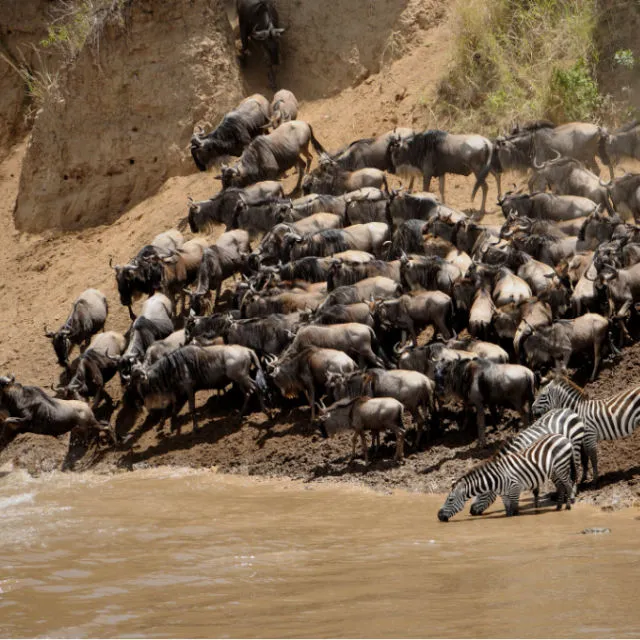Best Time For The Wildebeest Migration


Hurry, this month (September) is probably your last chance this year to witness the epic Mara River crossings of the Wildebeest migration! The Great Wildebeest Migration is often referred to as ‘nature’s greatest show on earth’. Over two million wildebeest (members of the antelope family), zebras and gazelles move from the Masai Mara through the Serengeti ecosystems in search of…
01/09/2020 Wildlife Safari
Hurry, this month (September) is probably your last chance this year to witness the epic Mara River crossings of the Wildebeest migration! The Great Wildebeest Migration is often referred to as ‘nature’s greatest show on earth’. Over two million wildebeest (members of the antelope family), zebras and gazelles move from the Masai Mara through the Serengeti ecosystems in search of green pasture and water, in a pattern of circular migration followed for centuries. To see hundreds of thousands of animals following different routes to the same destination, spread across the vast plains as far as the eye can see, will take your breath away. High drama is always present, as thousands of animals are taken by predators and thousands more are born, in what is known as ‘the circle of life’. The migration sightings are always spectacular, no matter which phase of life you witness. Despite knowing the migration happens all year round, it is also one of nature’s greatest paradoxes, as there is no way to predict the timing of the animals’ exact movements or which direction they will move in! We know that rain will trigger the wildebeest to move onto fresh grazing – but when exactly the rain will fall is difficult to predict, more so now with the onset of climate change impacting weather patterns. This is why timing and planning are essential to experience this once in a lifetime Migration Safari.
WELCOME TO AFRO LIONESS ADVENTURES, AN AWARD-WINNING GUIDE AND TOUR COMPANY BASED IN ARUSHA. WE ARE OWNED BY AND EMPLOY
ONLY FEMALE DRIVERS, GUIDES, PORTERS AND TRANSLATORS, MAKING US UNIQUE IN TANZANIA.
OUR PROFESSIONAL TEAM OF WOMEN SPECIALISE IN LEADING WILDLIFE SAFARI’S AND CLIMBS TO THE TOP OF MOUNT KILIMANJARO.
© 2024 Afrolioness Adventure. All rights reserved.